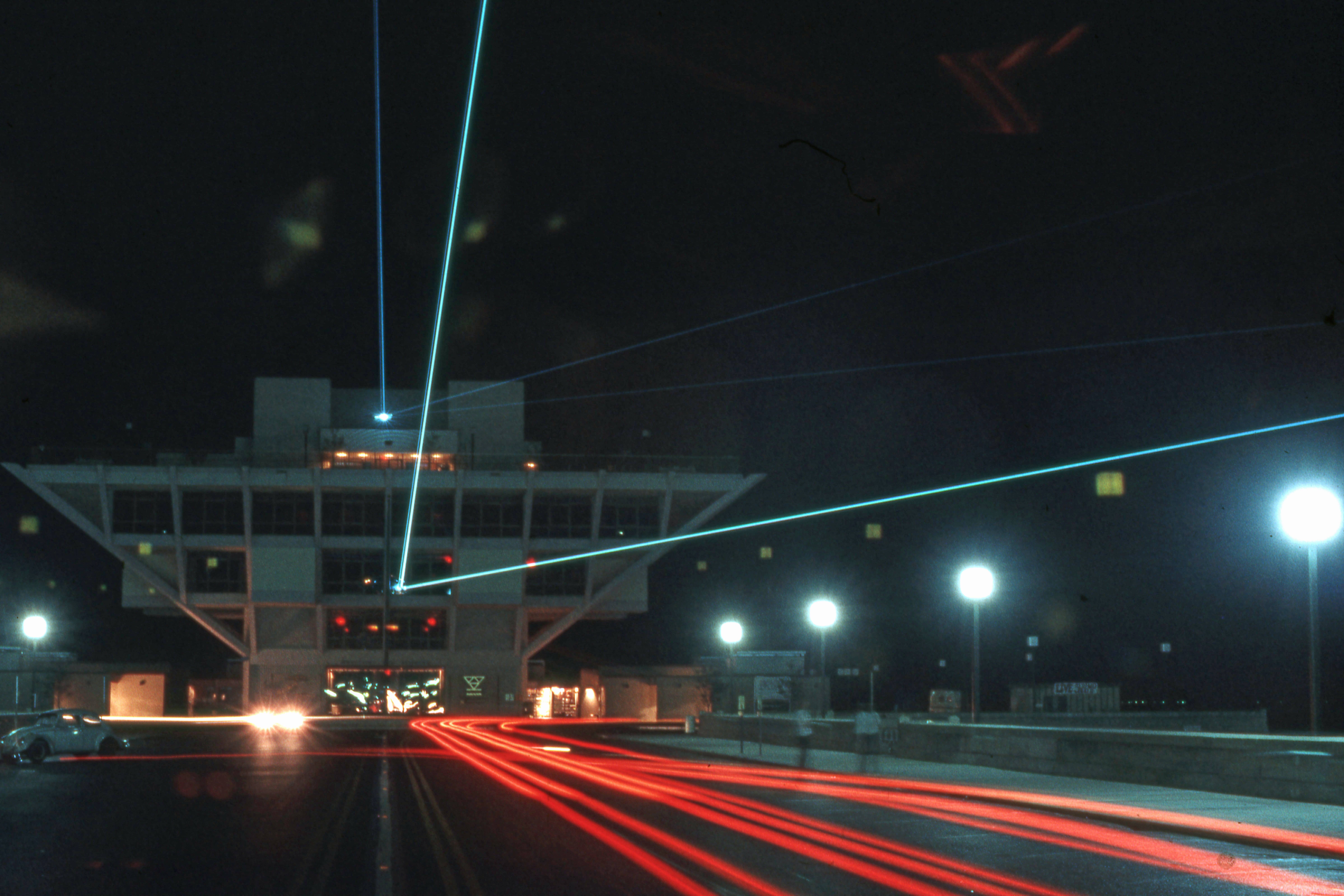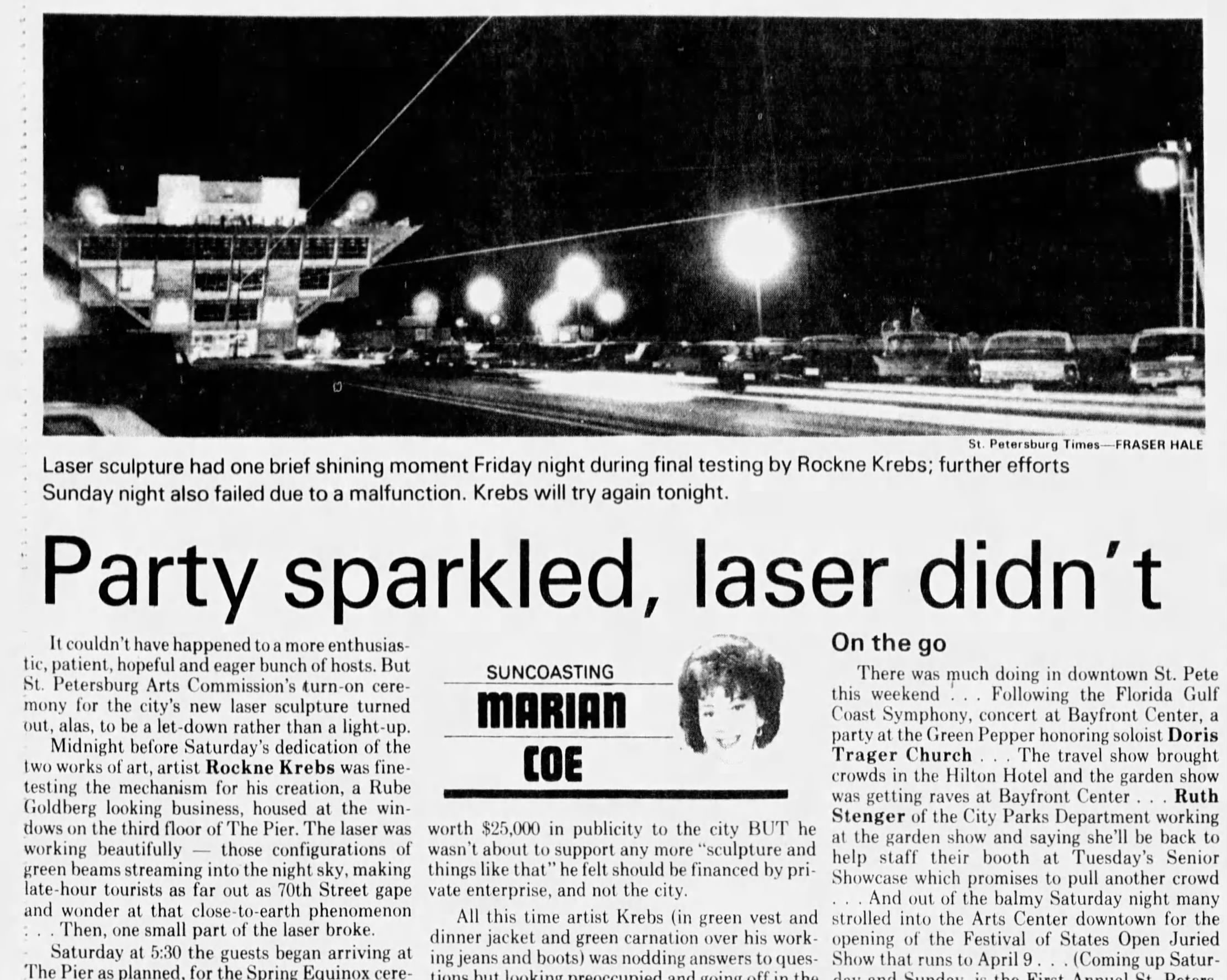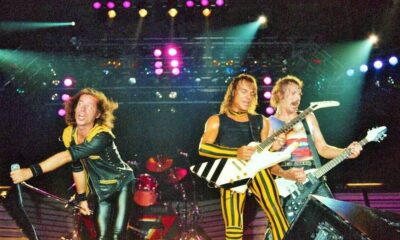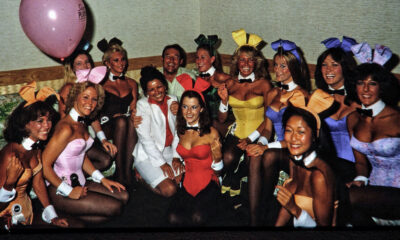Create
Vintage St. Pete: The Pier and The Laser

As a City of the Arts, St. Petersburg’s road from “provincial” to “powerhouse” was long and bumpy.
The reception to public art, in particular, was chilly long before Janet Echelman’s Bending Arc was proposed for the new St. Pete Pier in 2018, producing the expected outcry from citizens who just didn’t see why the City, or anybody, should spend thousands of dollars on a big, blue fishing net suspended from tall white poles.
The Echelman sculpture is, of course, considerably more ambitious and artistic than that, and today it’s a major part of the Pier experience. People grew to accept the large-scale art, and they grew to embrace it.
Things didn’t go so well for internationally renowned sculptor Rockne Krebs, who was commissioned in 1974 to create a piece for the then-new “Inverted Pyramid” pier. After dodging the slings and arrows of public bewilderment, and scorn and outrage from City Council and others in local government, Krebs delivered “The Laser” on budget, and on time. On March 20, 1976, he flipped the switch to give St. Petersburg its first look at the city-owned state-of-the-art, ahead-of-its-time laser light sculpture.
And it didn’t work.
“Everything about this piece was very new, and even to this day there are very few people who really understand the whole aesthetic of it,” remembers Glenn Andrews, who was the director of the city’s Arts Commission (and Krebs’ project director) in the mid ‘70s.
Lasers, or focused beams of laser light, were relatively new at the time, especially as components in artwork. The moving parts of Krebs’ creation, which sent a green beam westward over 2nd Avenue NE and another over downtown, were housed in a clear plexiglass box Krebs named Star Board, on the third floor of the Pier.
The beam’s mate fired in a pattern towards a series of prisms and mirrors, mounted on light poles, trees and buildings, which split the green shaft into different directions, shapes and colors in a repeating black-sky light show.
The Laser (and the Star Board installation, which naturally refracted and redirected rainbow lights behind it, throughout the third-floor space, every sunset) worked intermittently before Opening Night.
Dressed-up dignitaries gathered inside the Pier, sipping laser-green cocktails, while a crowd of 1,400 assembled on the long approach to watch the official debut of the Krebs creation.
Its failure on that warm spring night was blamed on a tiny replacement part that had not arrived, from the west coast, on time.

Rockne Krebs during installation at The Pier. Photo: City of St. Petersburg.
Rockne Krebs was so named by his father, a sports fan, after college football great Knute Rockne. The St. Louis native was a pioneer in light sculpture and held several patents for laser technology.
“Lasers, and their appeal, made sense for where his art was in the 1960s,” says Heather Krebs, who has managed her father’s archives since his death in 2011. “He was always working with light and with transparencies. His sculptures were transparent plexiglass, and everything had to do with space and lines, and the absence of the material still made up the art.
“The empty space around the plexiglass sculptures were part of how he visually saw the art and the lines. And I think that the lasers just made so much sense to him – being able to create those lines on a much larger scale.”
Krebs created his first three-dimensional laser sculpture in 1968, and began crafting urban environmental sculptures, using lasers, shortly thereafter.
“His drawings were amazing,” remembers his daughter. “He could draw anything. And to be able to draw in space, I don’t know how he could turn that down. Who could turn that down?”
Krebs couldn’t turn down an offer from St. Petersburg’s mayor and the newly-formed Arts Commission to develop something for the city’s new Pier (the “Inverted Pyramid” went up in 1973, replacing the antiquated Municipal Pier).
The National Endowment For the Arts granted $20,000 for Krebs’ Pier sculpture, and City Council approved an additional $25,000.
Barely.
Dreama Dawson reminded councilmen to the applause of the audience that “there are people waiting all day long in the unemployment line. We have no money.” She urged the council to first consider “the basic needs of humanity.”
“To draw a line at this time would basically be to ignore the last 40 years when we’ve done nothing for the arts,” replied Mayor C. Randolph Wedding.
St. Petersburg Times/Feb. 21, 1975

“Star Board: Home on the Range, Part VI,” on the third floor of The Pier. Photo by Rockne Krebs/@Artists Rights Society.
Local newspeople, Anderson believes, didn’t know “beans from bullets” when it came to accurately describing Krebs’ work, and what it did. Laser art was in its infancy, and there was an entirely new palette of words to be learned.
“The main laser beam would go right over the top of 2nd Avenue, all the way out and actually out into space at that point,” he says. “There were reports of people out in the middle of the Gulf of Mexico that saw that green thing go over the top. And were stunned by the whole thing.”
The laser would kick on right at sunset, as a subtle reminder of Florida’s famous “flash of green,” the natural phenomenon that occurs at the moment the sun “sinks” into the Gulf.
The Star Board installation was part of a national series Krebs called “Home on the Range.” (St. Pete’s was subtitled “Part VI.”) He had decorated it with beach sand, a tiny palm tree, a plastic flamingo and other Sunshine State ephemera.
When The Laser was working, said Anderson, it was “other worldly and the eighth wonder of the world. But when it was broken down, it was a curse.”
Until it was dismantled and removed in the mid ‘80s, it was barely operational.
Nevertheless, Anderson says, “I have always been thrilled to have been involved in that project, and to having been around Rockne. He was an extremely brilliant artist. And when you understand the processes of that installation, you see the genius.
“I sat down there with him and watched him doing some drawings and thinking things out. I wouldn’t have missed that for my life.”
Heather Krebs was 5 years old when her dad was in St. Petersburg working on The Laser. She remembers it well. “Depending on where you viewed the laser piece, different shapes were happening in the sky,” she says. “Different drawings. Different light sculptures in the sky.
“He’d spend months measuring and figuring out how to make things happen. And sometimes magical things happened.”
An otherworldly postscript
Two years after Rockne Krebs died, rumors began flying among online UFO enthusiasts that “proof” of a close encounter, in St. Petersburg, had been documented back in the ’70s.
The source was a mysterious folio of fanciful sketches depicting laser beams, a tornado and drawings of “aliens” and a five-headed beast, along with a handwritten description of the “incident.”
The material had been discovered on the side of a road in Asheville, N.C., and when its contents were uploaded to Reddit, the online community went ballistic with speculation.
Tampa Tribune reporter Paul Guzzo spoke with Asheville resident Dan Wickham, who’d uploaded the material at the behest of a “friend.” It was all very mysterious.
“He obviously saw something that changed him,” Guzzo quoted the man as saying, and noting in his story that July 7, 1977 – the date referenced in the material – a tornado had touched down in Pasco County. Add to that phenomenon “mysterious” lights in the sky over St. Petersburg … voila, “evidence” of UFOs in Florida.
“I can’t believe this is happening,” said Heather Krebs when contacted by the Tribune. “It’s all so bizarre. My father was not into UFOs, but he would have loved this.”









Velva Lee Heraty
January 21, 2022at4:21 pm
Hi Bill, I was intimately involved in the push to remove the sculpture when it was proposed for Spa Beach prior to landing on the pier proper (Actually it was originally meant for the end of the pier). Have a folder on memos, e-mails, etc. about it. Please accept this minor correction to your article. The “hairnet” as we locals called it, was never blue. It’s not blue now. The original was the size of a football field and was brightly, almost neon, colored lie a rainbow. Have pix, etc. about that piece of local bru-ha-ha history if you’d like to see them. Videos too.
On another note, I truly enjoyed your Rockne Krebs article. Thanks!